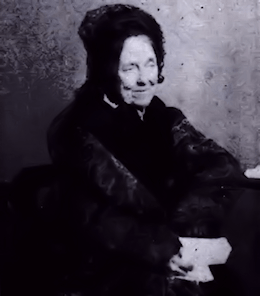Textus Receptus Bibles
Julia E. Smith Translation 1876
| 1:1 | The elder to the chosen mistress in truth; (and not I only, but also all and to her children, whom I love they having known the truth;) |
| 1:2 | For the truth remaining in us, and shall be with us forever. |
| 1:3 | There shall be with you grace, mercy, peace, from God the Father, and from the Lord Jesus Christ, the Son of the Father, in truth, and love. |
| 1:4 | I was greatly rejoiced that I found of thy children walking about in the truth, as we received a command from the Father. |
| 1:5 | And now I entreat thee, mistress, not as writing a new command, but what we had from the beginning, that we should love one another. |
| 1:6 | And this is love, that we walk about according to his commands. This is the command, That as ye heard from the beginning, ye should walk in it. |
| 1:7 | For many cheats come into the world, they not acknowledging Jesus Christ coming in the flesh. This is the cheat and antichrist. |
| 1:8 | Look to yourselves, lest we should destroy what things we have wrought, but we should receive a full reward. |
| 1:9 | Every one passing by, and not remaining in the teaching of Christ, has not God. He remaining in the teaching of Christ, the same also has the Father and the Son. |
| 1:10 | If there come any to you, and bring not this teaching, receive ye him not into the household, and to rejoice tell him not: |
| 1:11 | For he telling him to rejoice, partakes of his evil works. |
| 1:12 | Having many things to write to you, I was not willing by paper and ink: but I hope to come to you, and to speak mouth to month, that our joy might be filled up. |
| 1:13 | The children of thy chosen sister greet thee. Amen. |

Julia E. Smith Translation 1876
The Julia Evelina Smith Parker Translation is considered the first complete translation of the Bible into English by a woman. The Bible was titled The Holy Bible: Containing the Old and New Testaments; Translated Literally from the Original Tongues, and was published in 1876.
Julia Smith, of Glastonbury, Connecticut had a working knowledge of Latin, Greek and Hebrew. Her father had been a Congregationalist minister before he became a lawyer. Having read the Bible in its original languages, she set about creating her own translation, which she completed in 1855, after a number of drafts. The work is a strictly literal rendering, always translating a Greek or Hebrew word with the same word wherever possible. Smith accomplished this work on her own in the span of eight years (1847 to 1855). She had sought out no help in the venture, even writing, "I do not see that anybody can know more about it than I do." Smith's insistence on complete literalness, plus an effort to translate each original word with the same English word, combined with an odd notion of Hebrew tenses (often translating the Hebrew imperfect tense with the English future) results in a translation that is mechanical and often nonsensical. However, such a translation if overly literal might be valuable to consult in checking the meaning of some individual verse. One notable feature of this translation was the prominent use of the Divine Name, Jehovah, throughout the Old Testament of this Bible version.
In 1876, at 84 years of age some 21 years after completing her work, she finally sought publication. The publication costs ($4,000) were personally funded by Julia and her sister Abby Smith. The 1,000 copies printed were offered for $2.50 each, but her household auction in 1884 sold about 50 remaining copies.
The translation fell into obscurity as it was for the most part too literal and lacked any flow. For example, Jer. 22:23 was given as follows: "Thou dwelling in Lebanon, building as nest in the cedars, how being compassionated in pangs coming to thee the pain as in her bringing forth." However, the translation was the only Contemporary English translation out of the original languages available to English readers until the publication of The British Revised Version in 1881-1894.(The New testament was published in 1881, the Old in 1884, and the Apocrypha in 1894.) This makes it an invaluable Bible for its period.